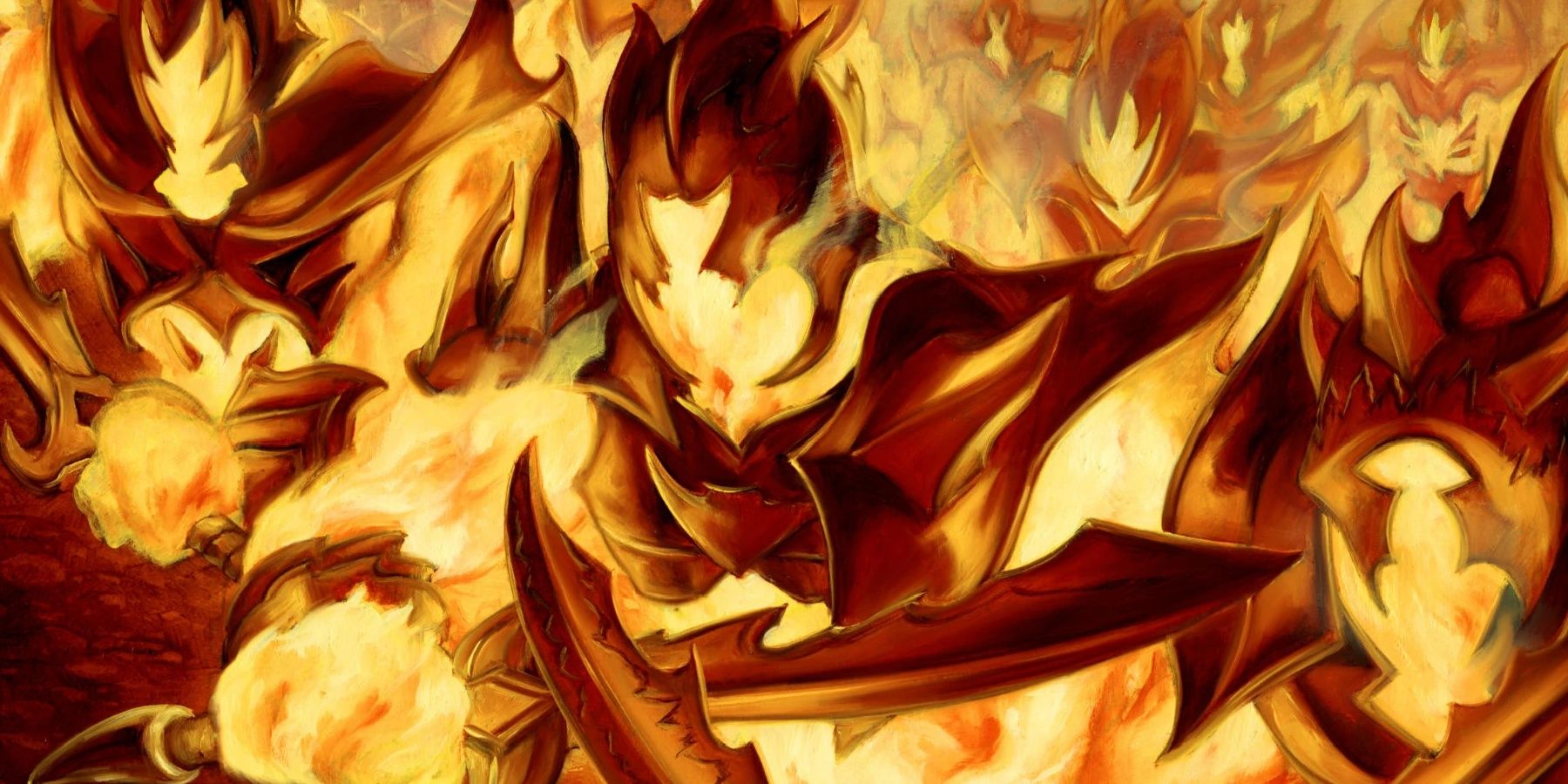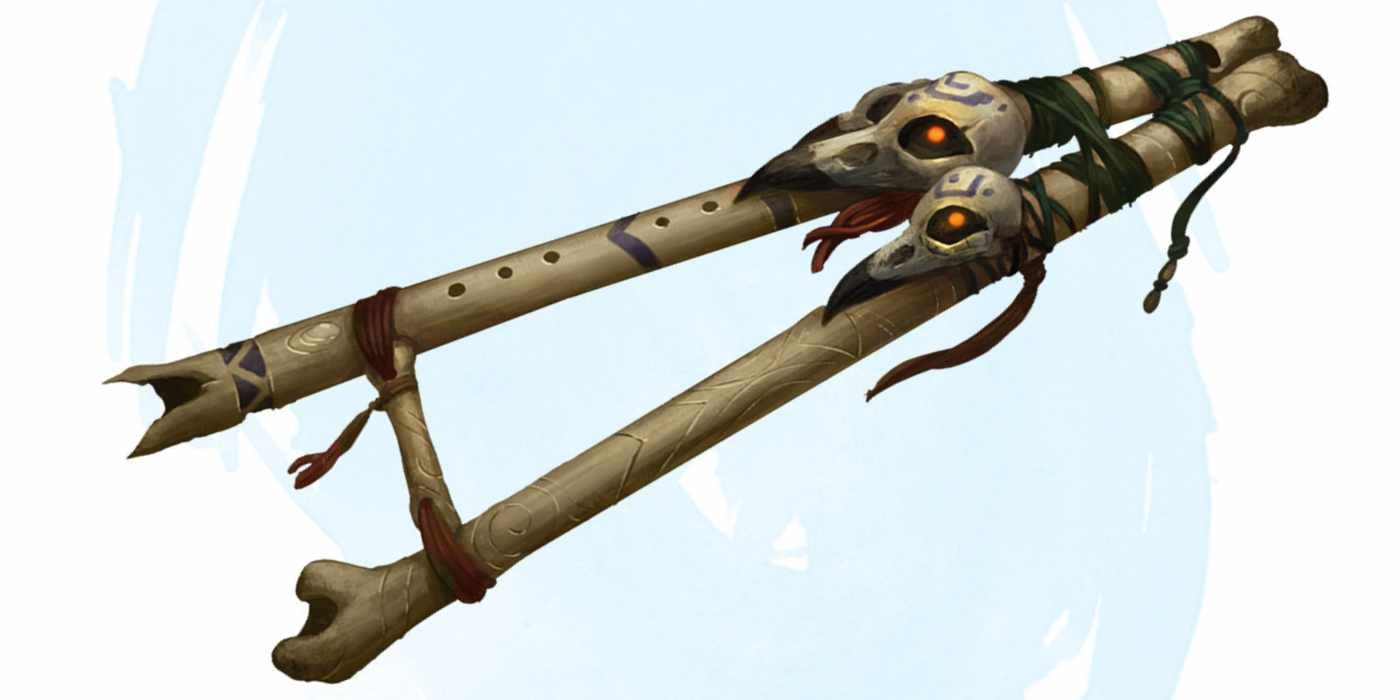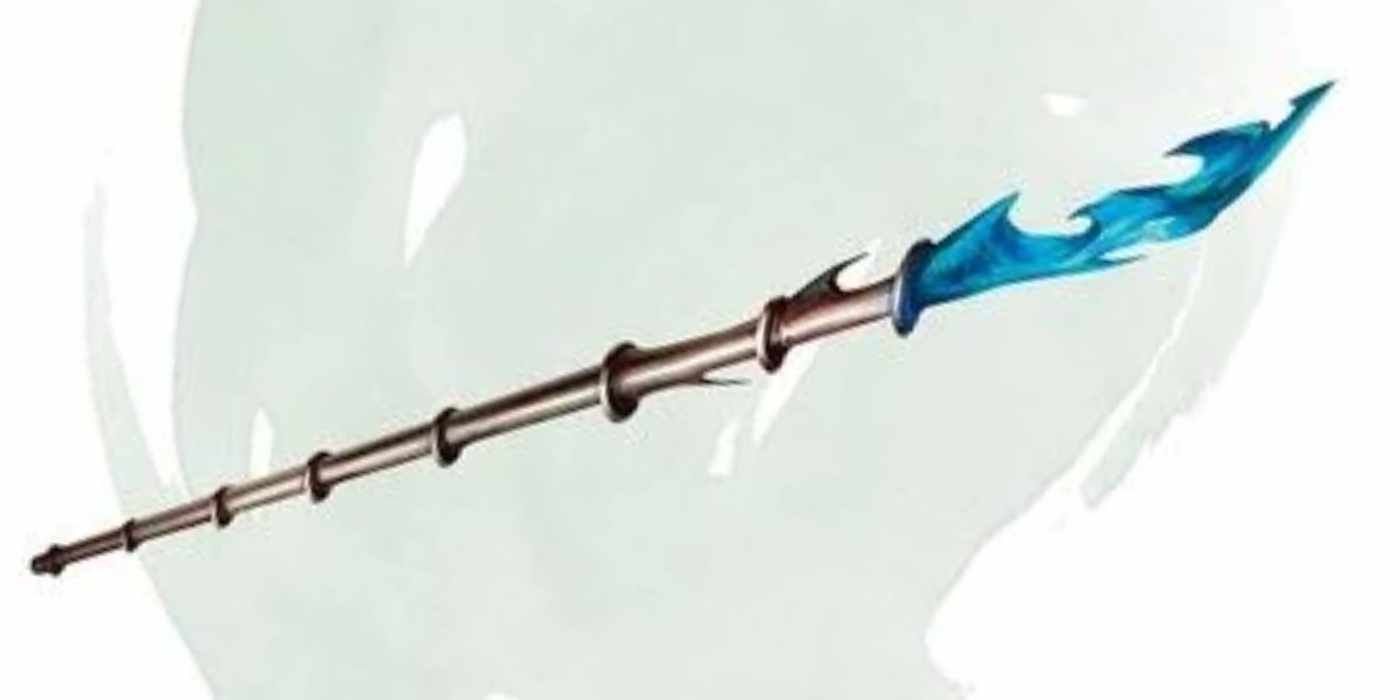Not all magic items in Dungeons & Dragons Fifth Edition are equal. One of the clearest examples is that magic items are ranked on their rarity, from Common to Artifacts. The rarest items often have lengthy descriptions full of game-changing effects. However, nearly all magic items are invaluable regardless of rarity.
In particular, D&D 5e‘s Uncommon magic items have plenty to offer players. Although they’re often loot found and used in the early stages of a campaign, Uncommon items will remain party mainstays through to a campaign’s end. Some stand out above others for how invaluable they are.
Updated May 15th by Isaac Williams: Dungeons & Dragons is full of quality magic items of any rarity, including Uncommon. The right low-level magic item can stay with a character throughout an entire campaign. This list has been updated to include even more of the best Uncommon magic items in D&D 5e.
12 Emerald Pen
Fizban’s Treasury Of Dragons pg. 23
The Emerald Pen is a magic item introduced in Fizban’s Treasury of Dragons. It has a niche but fun ability that more creative D&D parties are sure to get use out of. Besides writing normally without ink, a character holding the Emerald Pen can use it to cast Illusory Script at will.
Illusory Script allows the writer to encode messages so that only a certain chosen few can read them. This can be used to great effect in a D&D campaign focused on intrigue. Even better, the Emerald Pen doesn’t require attunement. It expands a party’s options without limiting them in any way.
11 Any Enhanced Spellcasting Focus
Dungeon Master’s Guide & Tasha’s Cauldron Of Everything
There is no universal spellcasting focus magic item in D&D 5e. Instead, every spellcasting class has their own. They range from the warlock’s Rod of the Pact Keeper in the Dungeon Master’s Guide to items like the wizard’s Arcane Grimoire or the sorcerer’s Bloodwell Vial. The Uncommon forms of these items give a +1 to spell attack rolls and saving throw DCs.
This is more significant than a +1 to weapon attacks and damage. Spells can target multiple creatures and have more devastating effects than mere damage. Any increase in saving throw DC increases a spellcaster’s chances of taking one or more enemies out of the fight. On top of that, they often have extra abilities like the Rod of the Pact Keeper’s spell slot restoration.
10 Gloves Of Missile Snaring
Dungeon Master’s Guide pg. 172
The Gloves of Missile Snaring are an iconic D&D magic item that has saved many characters’ lives. When wearing them, a character can use their reaction to deflect a ranged weapon attack sent their way. It reduces the damage by 1d10 plus a character’s Dexterity modifier. This can negate the damage from an arrow or javelin and even take the bite out of a ballista bolt.
The Gloves of Missile Snaring provide consistent protection from ranged attacks. Even better, they don’t require attunement or charges. A D&D character can take this reaction any number of times in an adventuring day. Particularly in certain adventures, they can protect a character from hundreds of points of damage.
9 Gem Of Brightness
Dungeon Master’s Guide pg. 171
The best Uncommon magic items in D&D serve multiple purposes. Plenty of magic items exist to provide light, but none do it with the versatility of the Gem of Brightness. This small prism has 50 charges and can be used to cast light in a radius slightly larger than that of a torch. However, the Gem of Brightness’s usefulness doesn’t stop there.
The bearer of the Gem of Brightness can expend charges to make attacks that will blind targets, either one at a time or in a wide cone. Blindness is one of D&D 5e’s most devastating status effects, especially against spellcasters. The Gem of Blindness has no way to regain charges and will eventually run out. Before then, however, it’s invaluable both in and out of combat.
8 Nature’s Mantle
Tasha’s Cauldron Of Everything pg. 133
Nature’s Mantle is an item specifically for rangers and druids introduced in Tasha’s Cauldron of Everything. One of its most notable features improves a character’s stealth capabilities. It lets them take the Hide action even if they’re being directly observed, as long as they are lightly obscured. In fog, smoke, or even darkness, they can disappear before a creature’s eyes.
This is invaluable for any character. However, Nature’s Mantle has more. It also functions as a spellcasting focus when worn. This is less necessary for druids, who often dedicate a hand to a focus or component pouch. However, it’s invaluable for D&D rangers who often dual-wield weapons. It lets them cast without having to fiddle with their gear.
7 Elemental Gem
Dungeon Master’s Guide pg. 167
The Elemental Gems are a set of Uncommon magic items that offer a wildly powerful effect for their relatively low level. There are four variations, one for each kind of elemental. When shattered, they summon a D&D elemental of their corresponding type.
This summoning follows the same rules as the Conjure Elemental spell. This means that the elemental is nominally under the summoner’s control. However, if the conjurer loses Concentration, the elemental turns on them. This makes an Elemental Gem a high-risk, high-reward item at lower levels best saved for emergencies.
6 Decanter Of Endless Water
Dungeon Master’s Guide pg. 161
The Decanter of Endless Water is one of the best Uncommon magic items in D&D 5e, thanks to its sheer versatility. This non-attunement item can produce near-infinite amounts of water. When the Decanter of Endless Water is uncorked, it can trickle out in a stream (about one gallon’s worth per turn), a fountain (five gallons per turn), or a geyser (generating 30 gallons).
These effects aren’t game-changing in their own right. However, they also aren’t limited by charges or Attunement. The Decanter of Endless Water trivializes one aspect of resource management. Furthermore, canny players can find other uses for that much water.
5 +1 Weapon
Dungeon Master’s Guide pg. 213
Weapons are some of the most prolific magic items in D&D 5e. The game has a vast array of swords, daggers, and more with spectacular additional effects. However, a plain +1 weapon is often all a character needs. It doesn’t drain life from its enemies or roll additional damage dice. It does what a regular weapon does, but much more effectively.
A +1 weapon is the equivalent of an Ability Score Improvement in a character’s primary stat. It also allows a character to exceed the typical caps on attack bonuses and damage. Its most valuable ability is letting a martial character ignore enemy resistances or immunities to non-physical damage. Although there are more exciting magic weapons, a +1 is reliable.
4 Dust Of Dryness
Dungeon Master’s Guide pg. 166
At higher levels, D&D items’ uses become obvious. By contrast, Common and Uncommon items often require some creative thinking. Dust of Dryness can be used to compress a large area of water into a tiny pellet, potentially proving very useful for navigating flooded or swampy regions.
The pellet created by the Dust of Dryness can be shattered later to release the water, a strange but versatile feature for players who like to use their items to problem-solve. The Dust also has a much more situational secondary use. It deals high damage to any creatures mostly composed of water, such as water elementals.
3 Pipes Of Haunting
Dungeon Master’s Guide pg. 185
D&D has plenty of magic instruments, but many of them require attunement by a bard. The Pipes of Haunting are one of the best non-attunement magic items in D&D 5e. They allow any character proficient with wind instruments to conjure their magic.
Playing the Pipes of Haunting creates a magical effect that frightens those who hear it. Frightening a creature is a powerful effect, as it gives them disadvantage on their attack rolls and ability checks while the source of their fear is present. The DC for the saving throw on this effect is relatively high. Non-hostile creatures in the area can automatically pass the save, adding to the Pipes’ benefits.
2 Broom Of Flying
Dungeon Master’s Guide pg. 156
It cannot be overstated just how important the ability to fly is in D&D. Flying above combat removes the fear spellcasters and other fragile characters have of melee opponents. Most low-level enemies rely on melee attacks. Using this uncommon magic item is a great way to avoid that danger entirely.
At higher levels, flying becomes a reliable part of most characters’ arsenals. A Broom of Flying early on can provide players with far more freedom to bypass obstacles than the DM is used to. A Broom of Flying’s limitless amounts of flight per day make it one of the most versatile, invaluable, and beloved magic items in all D&D 5e.
1 Wand Of Magic Missiles
Dungeon Master’s Guide pg. 211
Wands are invaluable in D&D 5e. They allow characters to cast spells they don’t normally have access to, even if they’re not spellcasters themselves. Magic Missile is one of D&D 5e‘s most dependable spells. It cannot miss or be avoided, and only a handful of abilities counteract it. It’s one of the few abilities in the game that always deals its damage.
A Wand of Magic Missiles is one of the most useful wands in D&D. It gives any character a reliable fallback option. It’s valuable for spellcasters who run out of spell slots, melee fighters who lack ranged damage, and any character without good damage options in their own right. More charges can be used to upcast, letting it deal respectable damage from a low level.












